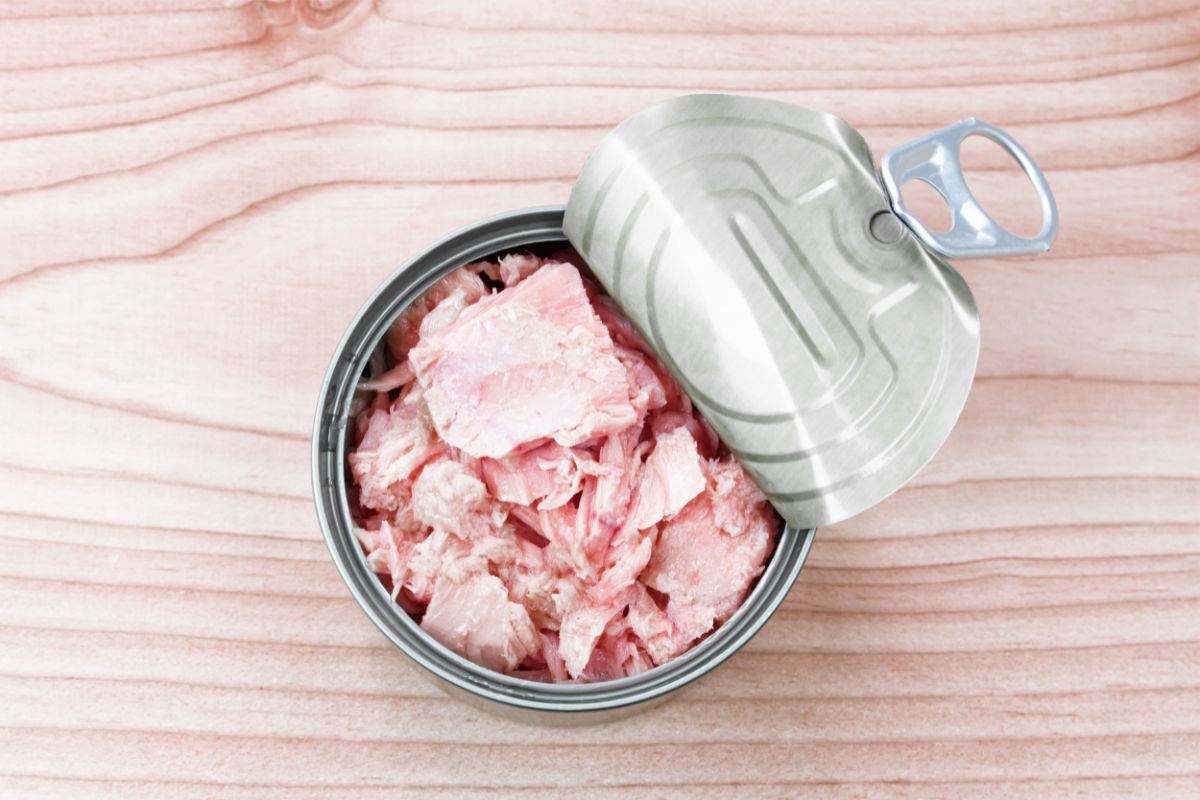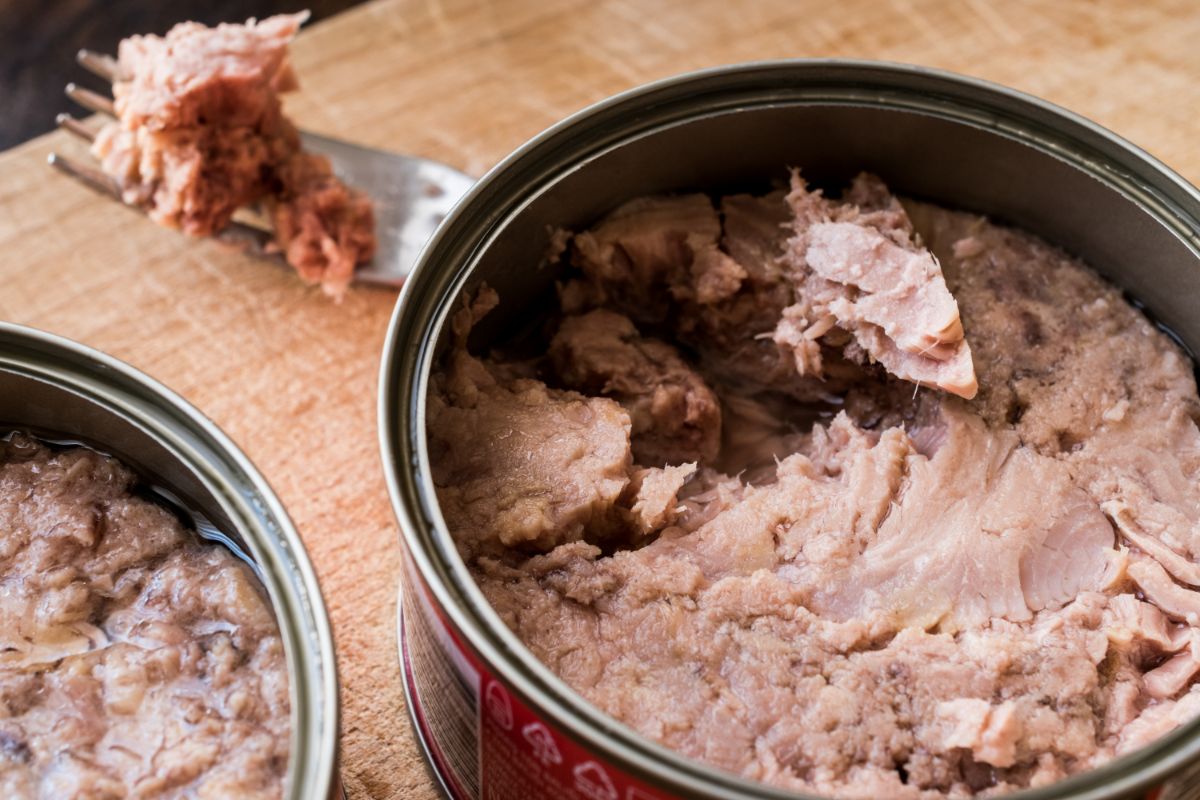Like many canned foods, canned tuna has a reputation for its long expiration date.
If you’ve recently found a can of tuna in your pantry, you may be wondering whether or not you can still eat it.

Canned tuna has a much longer shelf life than fresh fish, which tends to only last for only a couple of days.
In contrast, canned tuna or another form of canned fish can remain fresh for years.
This guide will cover everything you need to know about canned tuna, including its shelf life and the best ways of storing this ingredient.
How Long Will Canned Tuna Last?
A can of tuna typically has an extended shelf life that is typically between 3 and 5 years. The best way of telling whether or not your canned tuna is still safe to eat is to check the use-by-date.
Once opened, your can of tuna will have a significantly shorter lifespan. Namely, you should try to consume it within 5 days of opening it, though it is preferable to eat it within 3 days.
Often, canned tuna will be considered safe to eat even once the expiration date is up. This is thanks to an intensive sterilization process.
To determine whether or not it is safe to consume, there are certain signs that you should check, including the color or scent.
Generally, it is best to avoid consuming canned tuna that has exceeded the use-by.
How Should You Store An Opened Can Of Tuna?
Once you have opened the can of tuna, it is best to store it in the fridge. This way, it will have a longer shelf life.
When kept in the fridge, an opened can of tuna can last for a maximum of 5 days. However, we recommend that you attempt to use this tuna as soon as possible to prevent it from expiring.
After opening the can, you should transfer the tuna to an airtight container. Then, seal the fish before placing it in the fridge.
How Should You Store Canned Tuna?
To ensure that your food stays fresh, you must store it in the correct place.
Luckily, canned tuna and other forms of canned foods are rather durable. As a result, you won’t need to go to difficult lengths to protect the tuna.
Instead, you can merely place the canned tuna in a cabinet or pantry in your kitchen. They should be kept in a relatively cool place that is roughly room temperature.
Moreover, it is recommended that you elevate the canned tuna so that it is above the ground. Doing so can prevent the can from rusting, thus ensuring that it will last for a long time.
The temperature of the canned tuna should never exceed 90°F/ 32°C. In addition, you must never freeze your can of tuna.
To protect your canned foods during the summer months, you may want to relocate them to a cooler location in your home.

How Can You Tell If Canned Tuna Has Expired?
Thanks to its long use-by-date, it is rare for canned tuna to demonstrate signs of expiration.
However, there are certain signs that you should look out for to tell whether or not your canned tuna is still safe to eat:
The Smell
Canned tuna will typically have a strong aroma. Many people find the scent to be rather unpleasant. However, if this smell is rather bad, this could indicate that the tuna has expired.
The Color
Additionally, you may want to look at the color of the canned tuna. Typically, tuna will be brownish or a pinkish hue.
If this is not the case, such as the tuna has started to develop a grayish appearance, it may have expired.
The Can
If the can has been damaged, this is usually a bad sign. This may not be your fault. Instead, this damage may have occurred during the canning process.
Though this can be frustrating, it is nonetheless best to refrain from eating this tuna.
Cans that have been dented at the seal or rim should likewise be discarded. After all, the tuna will likely have started to expire.
How Can You Use Canned Tuna?
Tuna is a surprisingly versatile ingredient that can be paired well with a range of different dishes.
If you have some cans of tuna in your pantry, some of the best methods of using this food can include:
- Mix it with pasta to make a tuna pasta bake.
- Combine it with salad to make a simple tuna salad.
- Bake it into a fishy filling for a tuna pie.
- Add mayonnaise to your canned tuna to make tuna mayo sandwiches.
- Make a tuna melt by adding this ingredient to a sandwich and toasting it with cheese.
Final Thoughts
Thanks to its incredible flavor and long use-by date, canned tuna is commonly found in many people’s pantries.
Lasting for years, canned tuna is a great addition to your kitchen, as you can simply have it whenever you feel peckish. Just bear in mind that even canned tuna can become expired.
Frequently Asked Questions
No, it is unlikely that canned tuna will last this long. Instead, it typically lasts up to 5 years. After 10 years, the canned tuna will likely show some of the aforementioned signs of expiry.
Yes, canned tuna is a relatively nutritious food. It is low in calories and fat. Plus, canned tuna is a sensational source of omega-3 fatty acids and protein.
It is not suggested that you put your unopened can of tuna in the fridge.
This is because the metal might corrode over time. Instead, it is ideal to place the can in a dry and cool location.
Just bear in mind that several types of fish, including tuna, are relatively high in mercury.
As a consequence, you should not consume these forms of fish regularly, as you could suffer from mercury poisoning.







